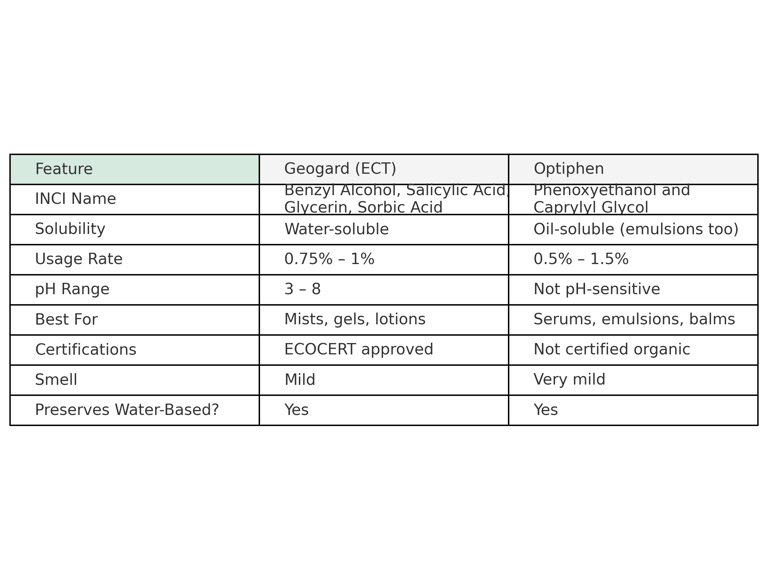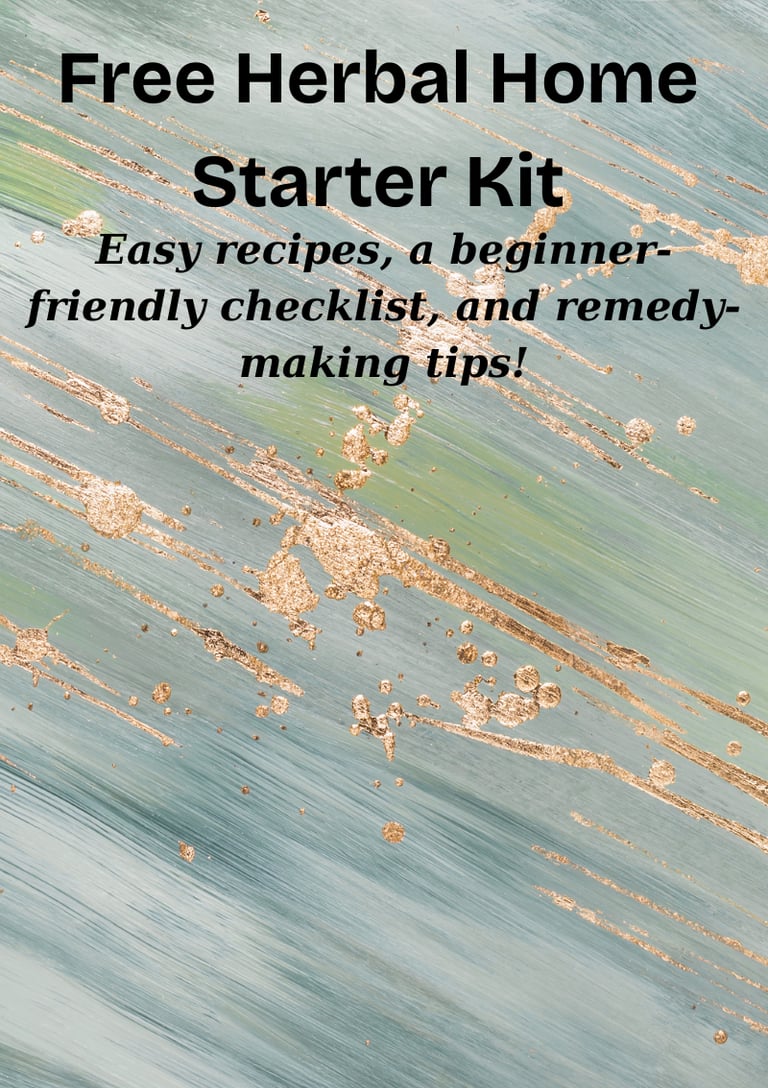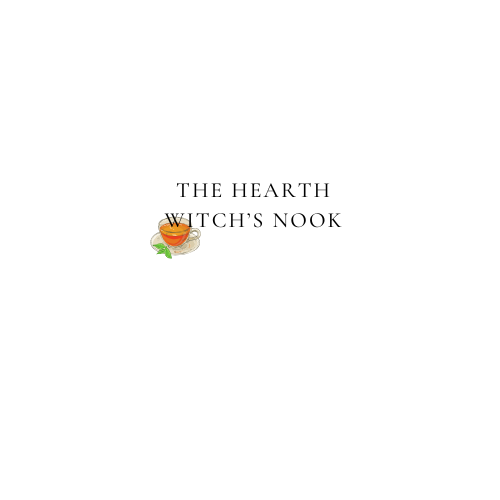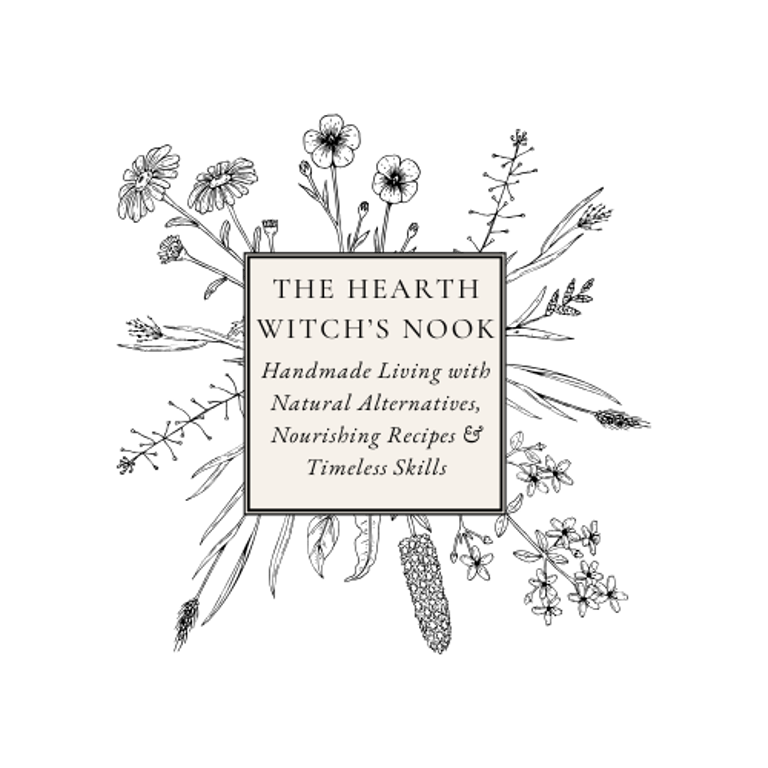Natural Preservatives for DIY Skincare: Geogard vs Optiphen
Confused about using preservatives in DIY products? Learn why Geogard and Optiphen are low-tox, broad-spectrum options perfect for homemade skincare.
BEHIND THE NOOK
CJ
6/9/20252 min read


Preservatives in Natural Products? Why I Use Geogard and Optiphen Anyway
When “All Natural” Gets a Little… Confusing
When I first started making my own skincare and home products, I was so excited to ditch all the synthetic junk. I imagined everything being 100% natural, straight from my apothecary shelf. But then came the confusing part: preservatives.
Wait—wasn’t I trying to get away from preservatives?
I remember standing in my kitchen with a freshly-made facial mist, reading warnings about bacteria and mold growth in DIY formulas that contained water. It felt like a total contradiction. If I wanted my product to be safe and last more than a few days, I had to add something... but what?
That’s when I discovered Geogard and Optiphen—two preservatives that changed everything.
What Is a Preservative, Really?
In simple terms, a preservative prevents mold, bacteria, and yeast from growing in your product—especially those with water, aloe, or hydrosols, which are breeding grounds for contamination. Without one, your shelf life might only be 3–5 days unless kept in the fridge and used with sterile hands/tools.
Why I Chose Geogard and Optiphen
Here’s the honest truth: not all preservatives are created equal. Most commercial products use preservatives that are irritating or endocrine-disrupting (like parabens or formaldehyde releasers). That’s a hard no from me.
Geogard and Optiphen are different—they’re broad-spectrum, paraben-free, and considered low-tox when used correctly. Here’s a quick breakdown:
Geogard (aka Geogard ECT)
INCI name: Benzyl Alcohol, Salicylic Acid, Glycerin, Sorbic Acid
Water-soluble: Yes
Usage rate: 0.75% to 1%
pH range: 3–8
Best for: Mists, lotions, aloe gels, and water-based products
Bonus: Approved by ECOCERT for use in certified organic cosmetics
Optiphen
INCI name: Phenoxyethanol and Caprylyl Glycol
Oil-soluble: Yes (but works in emulsions too)
Usage rate: 0.5% to 1.5%
pH range: Not pH-sensitive
Best for: Serums, balms, emulsions, and low-water products
Bonus: Mild scent, easy to work with
📝 Note: These are NOT natural preservatives like rosemary extract or grapefruit seed extract. Those are antioxidants—not true preservatives.
So Why Use Them At All?
Because mold and bacteria are invisible—and dangerous. Especially if you’re giving these to family members, kids, or customers, product safety has to come first. I use preservatives only when a formula needs it (typically anything with water or aloe), or I know there's no way I can use up the product before it expires. When I can avoid it (like in oil-only balms or butters), I do!
Using Geogard or Optiphen is a small trade-off to ensure:
You’re not putting spoiled product on your skin
You’re not tossing a recipe every 3 days
You’re protecting sensitive skin from unseen irritation
Final Thought
When I first started this journey into homemade skincare, I thought "natural" meant no preservatives ever. But what I’ve learned is that being natural isn’t just about avoiding ingredients—it’s about making informed, safe choices. Using a trusted preservative like Geogard or Optiphen doesn’t make your product less clean. It makes it smarter, safer, and more sustainable.
Think of it as giving your creations a little armor—so they can protect you in return. ❤️
Preservatives in natural products? It's not about being synthetic-it's about being safe!


this post is for informational purposes only and is not intended as medical advice. Always test products on a small surface first and use caution when using essential oils around children or pets
Questions? Email me at hello@thehearthwitchsnook.com
Explore natural remedies and hearth-centered living.
© 2025. All rights reserved.
Disclaimer: The content on this website is for educational and informational purposes only. It is not intended to diagnose, treat, cure or prevent any disease or health condition. Always consult with a qualified healthcare provider before making changes to your health or wellness routines-especially when using herbs, essential oils, or supplements for children, pets, or if you are pregnant, nursing or have a medical condition. The Hearth Witch's Nook is not responsible for individual outcomes.




